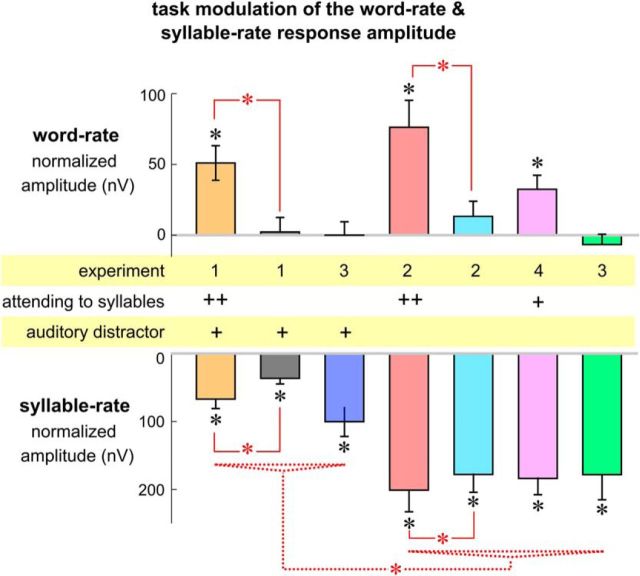Figure 4.
The influence of attention and tasks on the strength of word-rate and syllable-rate responses. Different experimental conditions are color coded the same way they are coded in Figure 3. The experiment each condition belongs to, whether the task is related to the isochronous syllables (++ for a word-level task and + for a speaker gender detection task), and whether the distractor is presented auditorily (+ for yes) are labeled in the middle of the figure. Response amplitude at each target frequency is normalized by subtracting the response amplitude averaged over a 1-Hz-wide neighboring frequency region (excluding the target frequency) to reduce the influence of background broadband neural activity. Black stars indicate that the normalized response amplitude is significantly >0 (p < 0.001, bootstrap, false discovery rate corrected). Red stars indicate significant differences between conditions (p < 0.001, bootstrap, false discovery rate corrected). Paired comparisons within the same experiment are also shown (solid red lines, star: p < 0.001, bootstrap). Unpaired comparisons across experiments were only applied to test whether the syllable-rate response is weaker in conditions with an auditory distractor than in conditions without an auditory distractor (dotted red lines). The star indicates a significant difference between any two conditions across the groups (p < 0.001, bootstrap).

